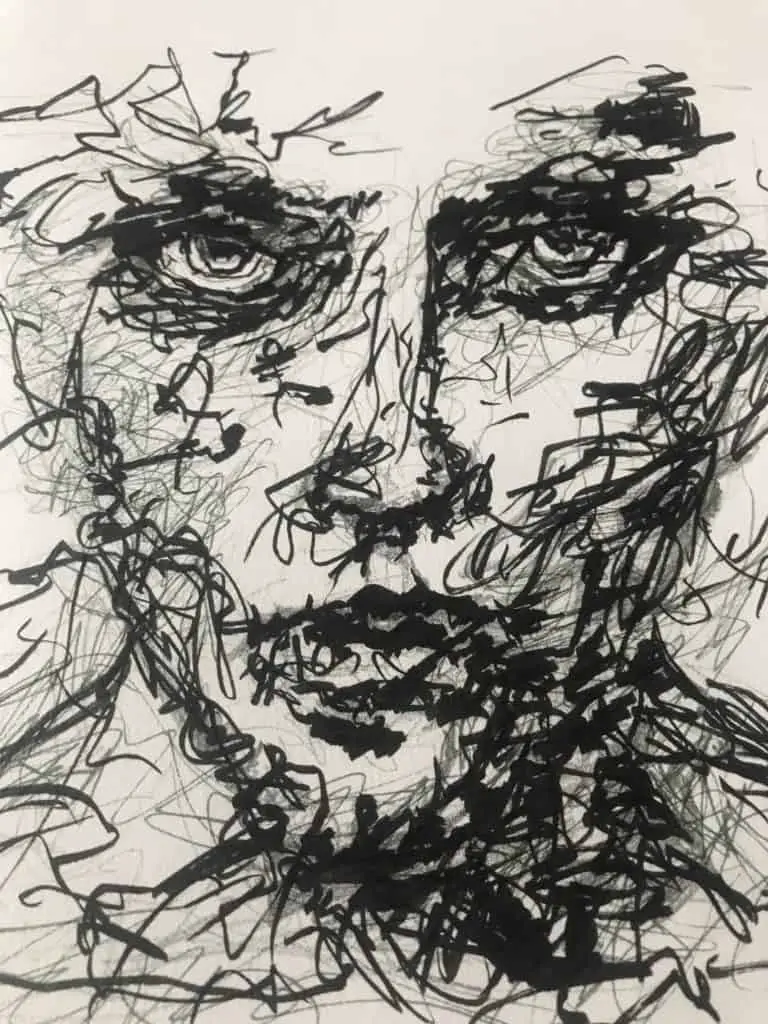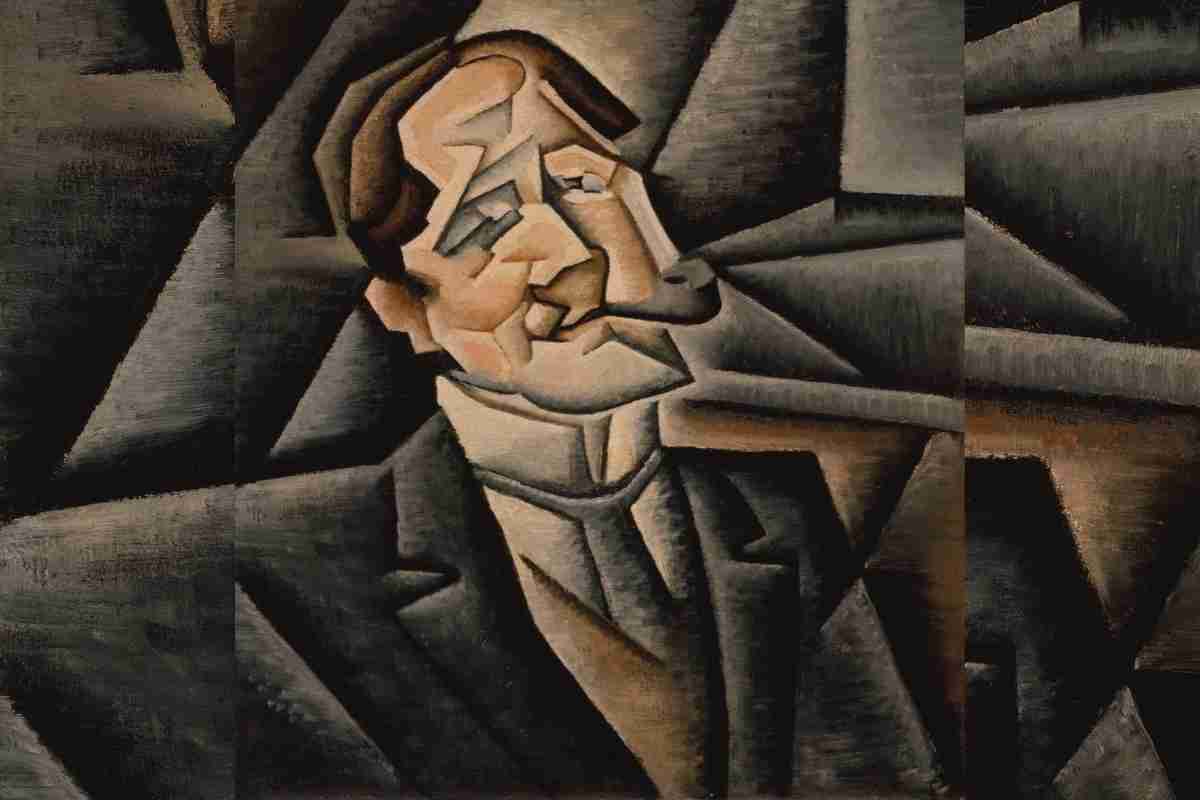Have you ever been asked to draw an abstract face? It can be daunting, but with the right techniques, it can also be a lot of fun. This blog post will share ten amazing techniques for drawing abstract faces. So whether you're a seasoned pro or just starting, these tips will help you create some truly unique and amazing artwork.
Do you want to learn how to draw an abstract face? Well, the good news is that there are many different techniques and materials that you can use as you learn how to draw an abstract face. As an artist, it's often difficult for people to push themselves beyond their comfort zone.
If you remember your beginnings as an artist, you didn't sit in an art class and learn how to create abstract art. You probably started with sill life drawings, then other realistic subjects. Abstract art is a step outside the norm for many people, but the possibilities are endless once you embrace it. You really can do just about anything you want to.
Abstract Drawing Ideas

How do you draw an abstract face? Here are 10 clear techniques to draw an abstract face using various artistic techniques
You do it any way you want to. You draw them it using any materials that you want to. The beauty of abstract art is that there is no wrong way to do it. If your perspective is off, or the shadows aren't quite right, it really doesn't matter with an abstract portrait.
You only need to come up with a vision, then find the right approach and materials to execute it. The following are 10 different abstract portrait ideas that you should try if you are trying to get your feet wet in the exciting world of abstract art.
1. Continuous Line Drawing Of The Face
What is a continuous line drawing? It's exactly what the name implies. Instead of lifting up your pen or pencil, you never take it off of the paper. When drawing a portrait in this manner, using a model can help a great deal.
What's nice is that you don't have to exaggerate any features of your model purposely; the fact that the line is continuous is enough to make the portrait abstract. If you want to add a nice twist to this approach, try not looking at your paper and not lifting your pen or pencil.
Just concentrate on your model, and let what happens to happen. A pencil will work when drawing a continuous line of a face, but a simple ballpoint pen will give you a smoother line.
2. Cubist Portrait
Cubism, made famous by Picasso, involves stripping away all of the soft edges and shadows you typically focus on when drawing or painting a portrait. With those smooth edges and shadows gone, you instead focus on sharp edges and angles and colors appropriate to your subject.
You don't try to capture a perfect likeness of the person you a drawing or painting. Instead, you try to capture their essence using color and a characterized, cubist approach to their features.
3. Expressionist Portrait In Oil Pastels
Expressionism distorts an image's natural appearance to convey a certain mood. This is done by using a color palette that helps to establish the atmosphere of a piece and also by eliminating details and, in some cases distorting the appearance of your subject.
If you want to create an expressionist portrait, oil pastels are the perfect medium. Oil pastels are a pigment suspended in an oil binder. They look like crayons, but they are very different than crayons.
With oil pastels, you can lay down color quickly, and with proper blending, you can achieve a look that is very similar to an oil painting. Oil pastels can also be thinned with turpentine, allowing you to blend the line between drawing and painting further.
If you have always wanted to dabble in oil painting, oil pastels are a great gateway into that medium. If you finish an oil pastel portrait that you would like to keep, keep in mind that oil pastels never fully dry. That means you'll need to frame it behind glass.
4. Abstract Expressionist Portrait
While an expressionist portrait in oil pastels will focus on color, an expressionist portrait in charcoal will be a darker piece because charcoal is black and not colorful. One of the more exciting ways to use charcoal is with water.
Try drawing your image on watercolor paper with charcoal. Then use a wet paintbrush to smear the image, giving you a look similar to ink and wash. You can also mist your picture with a water bottle to create randomized effects similar to a watercolor painting.
5. Just Doodle A Face
Have you ever tried just to sit down and doodle something? You don't start with a plan or have some kind of methodical approach. You just grab a pen or pencil and start drawing. Let your imagination go wild, exaggerate features, and just have fun. Just doodling faces is a great way to step out of your comfort zone and get used to creating abstract images.
6. Zentangle Face
While many abstract portraits eschew fine details, a Zentangle portrait does the opposite. Zentangle art features intricate repetitive patterns that are used to mesmerize the viewer. They are intricate and time-consuming, but they can be spectacular when done correctly.
One tip for creating Zentangle art is to embrace mistakes. While you may be tempted to try to erase an errant pencil mark, don't. In fact, try working in ink to prevent yourself from being able to change a stroke once it has been put down on paper.
7. Mixed Media Collage And Drawing
Mixed media portraits are a lot of fun to create, allowing you to take your art into realms that aren't possible with a single medium. The only real rule with mixed media collage portraits is that you use heavy paper. You need something to stand up to the abuse you are about to endure. Feel free to use pen, pencil, ink, paint, pastel, oil pastel, and various items you can glue down to create your artistic masterpiece.
8. Pop Art Portrait
A pop art portrait involves simplifying the shapes and colors of your subject to create an abstract representation of what they look like. Unlike other types of abstract art, you aren't really trying to distort your subject with a pop art portrait. Instead, you are trying to simplify things.
Look at the most prominent features of your subject, and emphasize those. Choose bright colors, and don't worry about the details.
9. Draw A Photograph And Distort It
Drawing from a photograph and intentionally distorting it is a great way to get into the practice of creating abstract images. Rather than having to feel pressure by drawing or painting with a live model, you can work privately at your own pace.
You can experiment and look at what looks good and what doesn't seem to work. Whatever you do, don't try to copy the photo. Create your art from the photo and make something unique.
10. Draw A Portrait To Music.
Music can evoke emotions in people, so it stands to reason that listening to music when you are drawing a portrait can help get the creative juices flowing. When you start to get your supplies set up, and prepare to begin working.
Turn on the music, and before you put the pencil to paper, close your eyes and think about what you are feeling. Then, start to create. When working in this manner, it's best to work quickly. Don't worry about making mistakes.
This is abstract art! There are no mistakes! One great medium for this type of portrait creation is oil pastels. They let you get your thoughts down quickly with bold colors, which really lends itself to this approach.
Experiment And Don't Be Afraid To Try Things That You Aren't Comfortable With
Creating abstract art is something that many people struggle with. This is ironic since creating a person's photorealistic interpretation is much more challenging.
If you aren't sure if abstract portraits are something you'll enjoy, consider what you want to accomplish as an artist. Do you want to copy your model simply? Do you want to create an interesting but lifeless portrait of your subject? If so, then why not try photography instead?
With abstract portraits, you can really come into your own as an artist. You can try new things without fear failing because you can't do anything wrong. You can work to capture the essence of your subject instead of merely trying to copy what they look like.
In fact, once you delve into abstract portraits, you may find that your work will give you a better sense of your subject than any realistic portraits you have ever done. Feel free to experiment with new approaches, allowing you to grow as an artist and develop a unique style.
Look at the masters for inspiration, but don't copy them. Be yourself. Find your approach. Abstract art can be incredibly fulfilling, and it's something that is different than what you have probably done before. So, embrace it, experiment, and have fun while you are at it!
Create Art With My Favourite Drawing Resources
General Drawing Courses. I like Udemy if you want to develop your knowledge of drawing techniques. Udemy is an excellent choice due to its wide range of creative courses and excellent refund policy. They often have monthly discounts for new customers, which you can check here. Use my link.
Sketching and Collage. Take a look at this sketching resource I have created. Use this link.
Proko. Is one of my favorite teachers who surpasses in the teaching of Anatomy and Figure drawing. Prokos course breaks down the drawing of the human body into easy-to-follow components aiding the beginner to make rapid progress. For this, I really like Proko.
Art Easels. One of my favorite ways to draw is by using a drawing easel, which develops the skill of drawing on a vertical surface. The H frame easel is an excellent vertical way to add variety to the style and type of marks you create when using a drawing board.
To see all of my most up-to-date recommendations, check out this resource I made for you.



